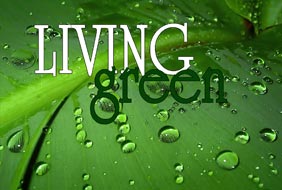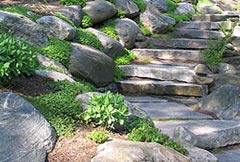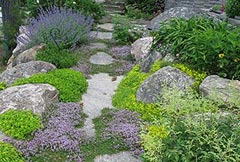Environmentally Responsible Landscape

A place where you can play, gather, and connect with nature. Landscapes can be designed to meet your needs and still:
- Be in balance with nature.
- Have minimal impact.
- Be visually pleasing.
- Be sustainable.
What is sustainability in your landscape?
"The capacity to endure" Your personal sustainable landscape is a place that;

- Meets your lifestyle needs.
- Is in balance with the local climate.
- Uses natural resources responsibly.
- Requires minimal resource inputs, such as fertilizer, pesticides and water.
- Has the potential for long term benefits for you and the environment.
How it works:
Begin with a site specific design that includes;
- Careful assessment of the site and its particular environmental sensitivity.
- Incorporating functional areas that minimize impact on the site.
- Durable hardscape elements.
- Visual appeal.
- Minimal resource inputs (fertilizer, pesticides, and water).
- Site appropriate plants.
- Conserving mature vegetation.
- Cost efficiency.
Naturalistic Design

- Requires less maintenance.
- Reduces environmental harm.
- Benefits wildlife.
- Provides seasonal interest.
Use Plants adapted to Local Conditions - Native Plants

- Thrive with the least care.
- Less damage from pests and disease.
- Won't harm natural areas.
- Provide food and habitat for birds and animals.
More Environmentally Safe Landscaping Solutions Include
- Right Plant - Right Place
- Choosing plants whose ultimate size and shape will fit the site.
- Choosing plants with suitable cultural requirements means greater chance of survival with minimal maintenance.
- Avoiding invasive plants that spread and get out of control.
Plant for the Long Term
- Perennials vs annual.
- Longer lived over shorter lived plants.
- Conserve mature plants where possible.